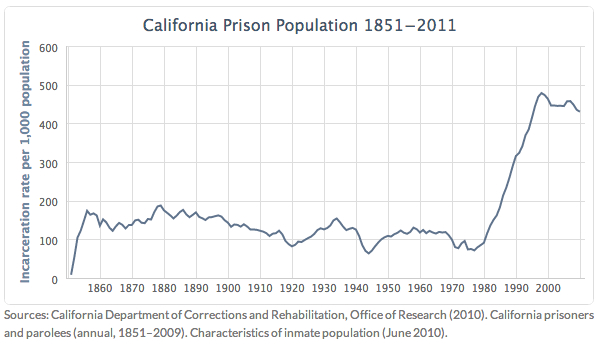New California Corrections Secretary to Restore Prison "Luster"

On Thursday, Governor Jerry Brown’s appointment to California corrections secretary, Jeffrey Beard, was sworn in at the capitol. The appointment as head of the California Department of Corrections and Rehabilitations (CDCR) still needs to be confirmed by the California Senate.
A little over a year into California’s realignment program, in which low-risk felons are being transferred to local corrections facilities and programs, the state is still facing significant budget constraints, prison overcrowding, and layoffs.
Before taking his current position in California, Beard was Pennsylvania’s prisons chief. Although a psychologist by training, Dr. Beard had an extensive career in corrections, prison mental health, and experience dealing with Pennsylvania’s crowded system.
The appointment has been met by snide remarks on some blogs, where readers seem to think Beard will have no more success than any of his predecessors in reforming California’s messy system. Advocates of realignment and those active in its undertaking view it as an important and necessary challenge that should reduce recidivism, increase public safety and, eventually, help mitigate state debt. Localities are taking on the state’s burden, but the CDCR is hopeful of realignment’s success.
Governor Brown said of his choice:
“The new Secretary has just the experience California needs. He’s been a prison warden, led the correctional system in Pennsylvania, and more recently participated in the Federal oversight of California’s prisons, visiting the majority of our institutions. In the face of a plethora of Federal court decisions and the bold realignment enacted by the Legislature, Jeff Beard has arrived at the right time to take the next steps in returning California’s parole and correctional institutions to their former luster.”
California prisons have long lacked such "luster," if one can describe a prison as having such an attribute in the first place, as the prison population increased dramatically from the early 1980s until 2010. Realignment was initiated by a Supreme Court decision demanding California improve health conditions in prisons, many of which had deteriorated due to stressed budgets and overcrowding. In the end, the reform was two-fold: reduce prison populations and save the state money. Additionally, even reaching the “constitutional level of health care” required by the court ruling was more about saving costs than raising a standard in human rights.
Since realignment, state prison populations have slowly and steadily been declining, but have been financially burdened localities.
California Sentencing Institute
The Future of California Corrections, a report detailing the long-term goals of realignment, highlightsto end costly lawsuits” and federal court oversight. Each reform plan is conjoined with its beneficial fiscal counterpart.
However, despite a rather unsettling lack of focus on realignment's original inspiration, human rights, the monetary urgency of the program has motivated the creation of creative alternatives to strict incarceration. Split sentencing, which incorporates limited incarceration in conjunction with alternative monitoring methods, probationary supervision, treatment, and rehabilitation could prove extremely beneficial to Californian society in the long run. Research shows that individualized release programs are effective in reducing recidivism.
Considering Beard's previous extensive experience and his propensity to empathize given his professional training, California can hope to benefit from this new appointment. The last secretary, Matthew Cate, resigned after just four years at his post and in a realm where changes are slow, long-term consistency and dedication is key. Hopefully, Beard's commitment to improving the lives of prisoners and increasing long-term public security outweigh any short-term vision of simply acquiring his quarter of a million dollar salary and generous California pension.



